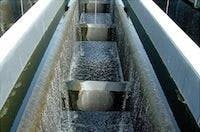The Chesapeake Bay watershed—the largest estuary in the United States—stretches across more than 64,000 sq miles, encompassing parts of six states and the District of Columbia. Considered by some one of the world’s most fragile ecosystems, the long-term health of the watershed has been well documented for decades. Excess runoff and discharges of nutrients—particularly nitrogen and phosphorous—from farms, pavement, wastewater treatment plants and other sources have fueled the growth of algae blooms that impact water quality and aquatic life. As a result, the USEPA has placed the bay on its List of Impaired Waters.
The ongoing nutrient pollution of the watershed has been the focus of billions of dollars in bay restoration spending over the past 25 years. Many wastewater treatment plants and industries in the watershed have installed or are planning to install new equipment to reduce the amount of nutrients that are discharged into the bay's tributaries to meet more strict total nitrogen (TN) and total phosphorous (TP) regulations.
A Technology to Limit TN and TP
Of all the watershed states, Maryland has the most stringent regulations, limiting TN to 3 mg/L and TP to 0.3 mg/L. But other states, have also introduced proven technologies to meet the state's point source caps. One technology—the TETRA Denite fixed-film biological denitrification process from De Nora Water Technologies—has frequently been chosen by plant operators to reduce high levels of nutrients discharged into Chesapeake Bay. For example:
• In 2010, the Arlington County Water Pollution Control Plant in South Arlington, Va., commissioned in 2010 with a TETRA Denite system, was one of the first major effluent denitrification facilities achieving effluent TN of less than 3.0 mg/L and TP of less than 0.18 mg/L. The plant today is discharging less than 1 mg of nitrogen per liter of water and less than 0.1 mg of phosphorous per liter into the Four Mile Run, compared to 19.6 mg of nitrogen in 1985, before nitrogen reduction efforts commenced. As one of the first major wastewater treatment plants in the Chesapeake Bay watershed to achieve enhanced nutrient removal treatment quality, the Arlington County plant is a major contributor to the bay's environmental quality goals.
• In 2013, the Baltimore Department of Public Works’ Patapsco WWTP installed a Denite system—it was then the world’s largest fixed-film denitrification system. The plant has reduced its discharge of TN by more than 80% and TP by more than 90%. (Another WWTP, the Back River WWTP in Baltimore, will become the largest fixed-film denitrification system in the world at its expected 2015 commissioning.)
Drawing on Experience
When the City of Cumberland, Md., in western Maryland needed to upgrade its Cumberland WWTP in order to comply with the Maryland Department of the Environment’s nitrogen and phosphorus permit limits, it drew on the experiences of all these plants, including two additional WWTPs—the Celanese WWTP and the Georges Creek WWTP—which are located just a few miles from the Cumberland plant. The Celanese and Georges Creek plants also had installed Denite systems in 2005 and 2010, respectively.
The project was designed by Whitman, Requardt and Associates LLP and was constructed by Carl Belt Incorporated. Funding was provided through the State of Maryland Bay Restoration Fund, the American Recovery and Reinvestment Act of 2009 and the Maryland Water Quality Revolving Loan Fund.
Not surprisingly, the BNR/ENR system Whitman, Requardt and Associates selected was the Denite system, an economical solution for the removal of NO3-N and TSS in a single treatment step. The fixed-film biological denitrification process also serves as a deep-bed filtration system capable of removing suspended solids to virtually any final effluent requirement. The system integrates well with other plant treatment processes to provide superior TN and phosphorous removal. Denite is used as the final treatment step in the TN removal process to help facilities meet discharge limits of 3 mg/L.
The specially sized and shaped granular media used in the Denite process is an excellent support medium for denitrifying bacteria, and the deep-bed environment is conducive to efficient NO3-N and solids removal. The contact between wastewater and biomass is excellent, and hydraulic short-circuiting is negligible, even during plant upsets. The media allows for heavy capture of solids of at least 1 lb of solids per sq ft of filter surface area (4.88 kg/sq m) before backwashing is required.
Upgrading Cumberland’s Facilities
Work on the plant upgrade began in 2009. The ENR project incorporated upgrades to existing and new facilities, including:
• the installation of the Denite system to provide for complete nitrification—the Cumberland Denite system has eight 11-ft-8-in.-by-90-ft filters with a total filter surface area of 4,402 sq ft;
• replacement of existing clarifiers to enhance the clarification process and to maintain suitable secondary effluent quality for the downstream denitrification filters;
• a new filter influent pumping station to transfer secondary effluent to the new denitrification filters;
• a new denitrification filter facility;
• a new post-aeration facility to reintroduce dissolved oxygen into the plant flow prior to the chlorine contact tanks and discharge to the north branch of the Potomac River;
• a new methanol storage and feed facility to provide supplemental carbon required for the denitrification process;
• a new biosolids heat-drying and pelletizing facility to manage the additional sludge production from the ENR upgrade and reduce the volume of biosolids for disposal—the facility will produce biosolids meeting Class “A” requirements, which is the highest-quality biosolids, allowing for wider distribution and disposal options; and
• a change of the chlorine disinfection system to UV disinfection.
Construction was completed in December 2010, with startup of the new facilities occurring in April 2011. The plant was designed for a maximum monthly flow of 25 mgd, an average daily flow of 15 mgd and a peak flow of 30 mgd. The plant was designed to reduce nitrate-nitrogen from 15mg/L to 1 mg/L or less, TSS from 10 mg/L to 3 mg/L or less and phosphorous to negligible. In fact, the plant is reducing these nutrients to well below the design standards.



